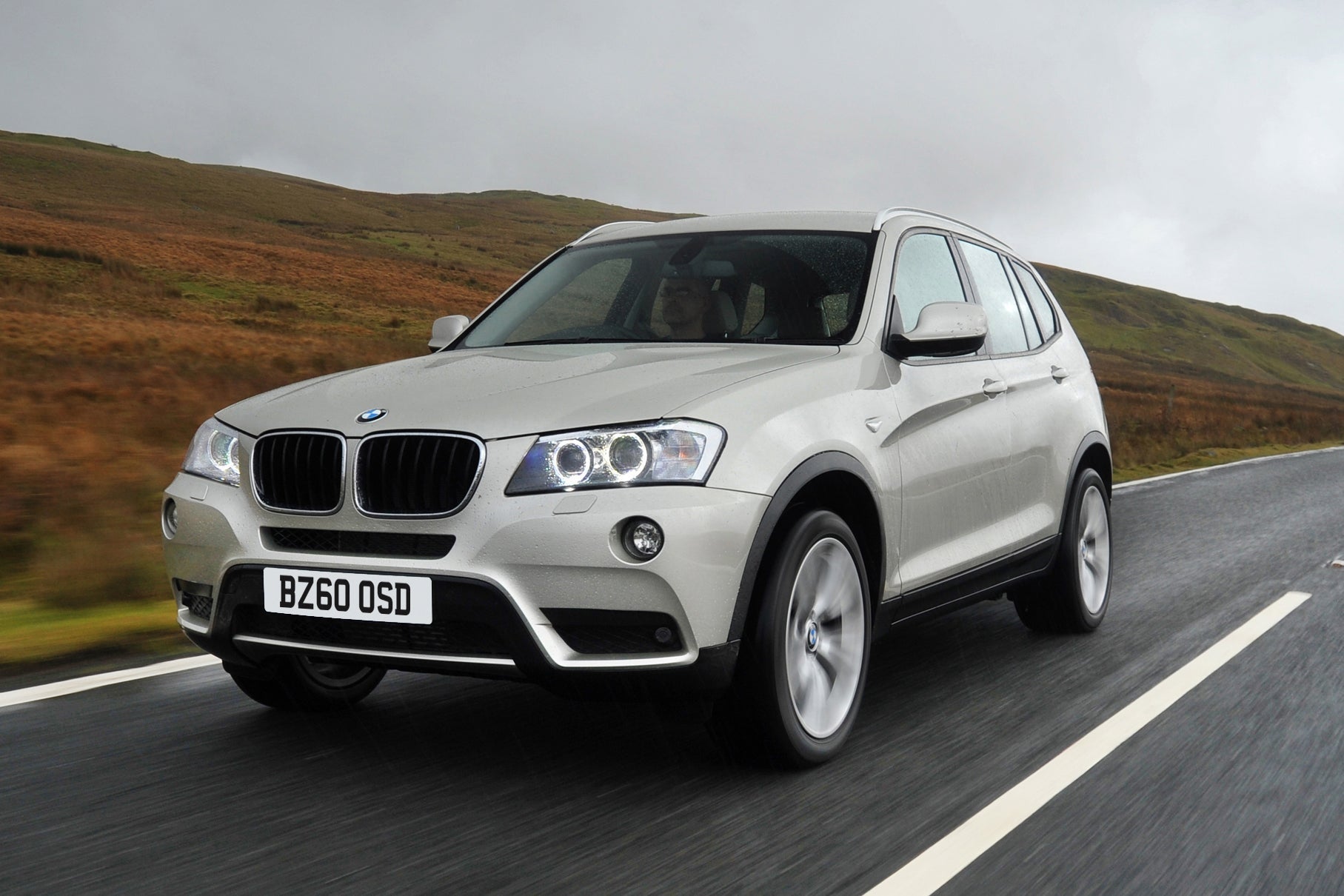BMW X3 (2010-2018) Review
Written by Andrew Brady
Quick overview
Pros
- On-road handling is impressive for a high-riding SUV
- Larger engines offer serious performance
- Big boot and plenty of space in the rear
Cons
- Diesel-only engine range might be a turn-off
- Interior of pre-2014 models feels notably cheaper
- Limited off-road ability
Overall verdict on the BMW X3
"In this BMW X3 review we are taking a look at the second-generation of the brand's compact SUV. This is the version where BMW hit the nail on the head, creating something much closer in execution to a mini-X5, with a rewarding driving experience and largely ignoring the idea of owners taking their cars off-road."
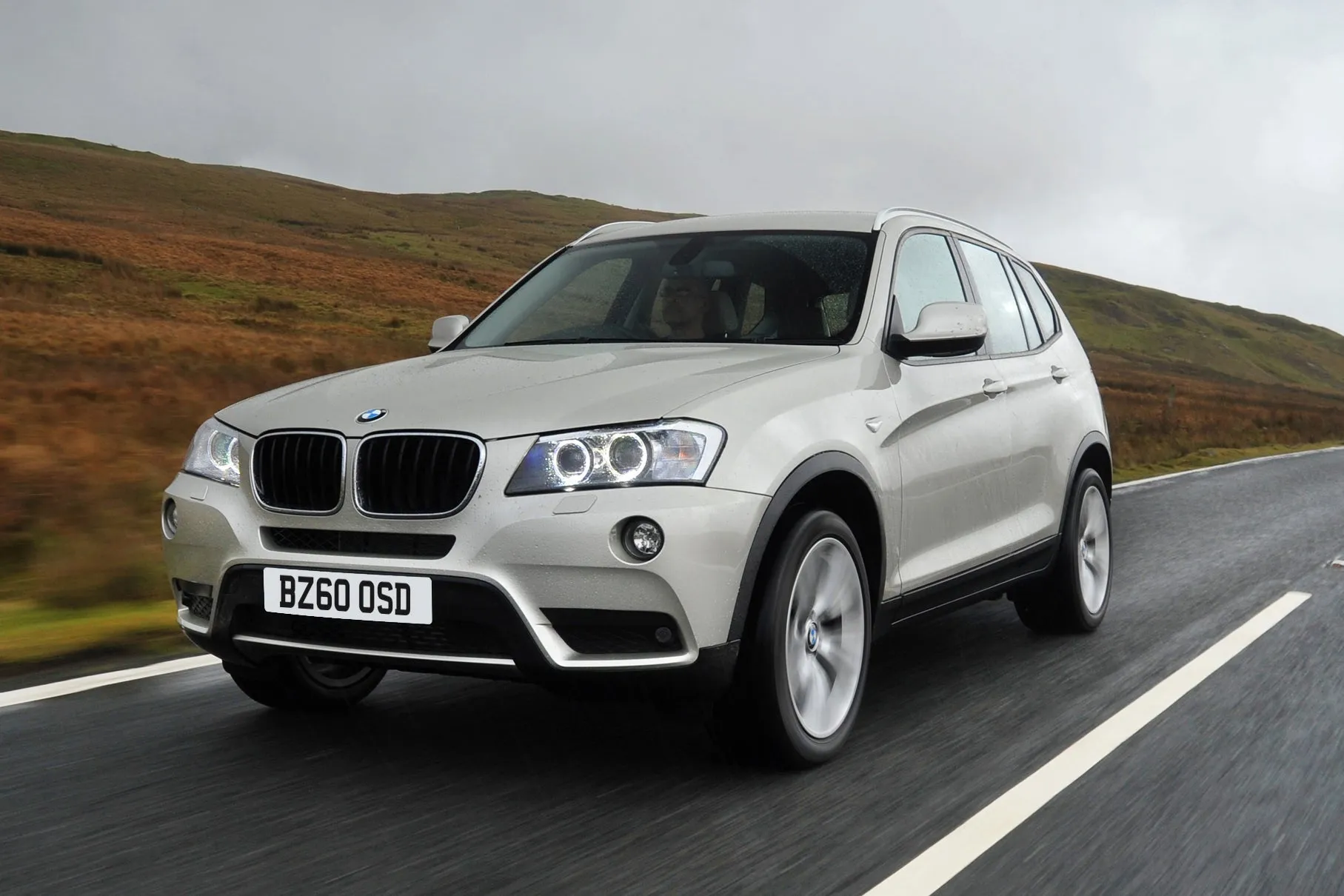
When it launched the second-generation X3 in 2010, BMW had clearly twigged that most SUV buyers weren’t interested in extreme off-roading action. Instead, it realised that on-road performance mattered more, along with a well-made interior and plenty of storage space.
The X3 delivers in all those areas. Compared with other compact SUVs, it delivers impressive ability on tarmac, bringing an element of fun to the driving experience. And with the right options, it can still tackle some mild off-road action.
Handling is a particular strong point for the X3. Its precise steering would shame many cars that sit much lower to the ground. Despite its size, the X3 manages to feel genuinely nimble on the road, adding an extra layer of confidence. The flip side of this impressive agility is ride comfort that borders on firm. M Sport models with bigger wheels, in particular, feel tautly sprung, and not best-suited to those wanting a calm cruiser.
All engines offered for the X3 are turbocharged diesels. These range from modest four-cylinder units through to a substantial twin-turbo straight-six making more than 310PS. While it may look like an SUV, it is worth remembering that BMW’s xDrive four-wheel drive is not standard on all X3s. Rear-wheel-drive versions, branded as sDrive, were introduced in 2012, with a firmer focus on tarmac use.
Aesthetics are subjective when it comes to cars, but the BMW X3 will never be remembered as a style icon. Later models, sold after the 2014 facelift, improve things with a larger front grille and new bumpers.
Other tweaks for the update included new wing mirrors and upgraded headlights. Although it still wasn’t the prettiest of SUVs, it helped make the X3 look more modern and closer to other BMW models. For those wanting extra visual aggression, M Sport models have a bespoke bodykit that delivers a respectable dose of attitude.
A key part of the 2014 improvements was a redesigned interior with better quality materials. It makes a notable difference to the cabin of the X3, and also saw an increased amount of technology made standard on all models. Equipment such as satellite navigation and heated front seats featured on all X3s made after the facelift.
Central to the appeal of the BMW X3 is the level of practicality it offers, wrapped in the shiny bodywork of a premium SUV. A boot with up to 550 litres of storage space is bigger than key rivals such as the Range Rover Evoque or Porsche Macan. Room in the rest of the X3 is also generous, with the rear bench capable of carrying three adults in relative comfort.
There is certainly a lot to like about the BMW X3, should you be in the market for a specific kind of SUV. It mixes relatively compact dimensions with a practical interior, just as it balances on-road performance with the call of getting dirty. Throw in the classy BMW badge, plus strong equipment levels on post-2014 cars, and it starts to make a lot of sense.
If you're looking for the newer version, you need our BMW X3 (2018-) review.
Is the BMW X3 right for you?
The core strength of the BMW X3 is that it manages to blend sportiness with the usefulness of an SUV. For keen drivers who still want to enjoy getting behind the wheel, the X3 delivers a desirable combination.
Compared with its rivals, the X3 scores particularly strongly when it comes to space. Both the cabin and boot are bigger than many alternatives. Also of note is that the X3 can tow trailers weighing up to 2400kg, making it useful for ‘lifestyle’ activities.
What may put some potential buyers off is an engine range restricted to turbocharged diesels. Although BMW’s diesel options are generally impressive, it could alienate those who generally only make shorter journeys, where a petrol engine would be better suited. For those seeking a compact premium SUV for main family car duties, the BMW X3’s blend of space and pace could make it a winner.
What’s the best BMW X3 model/engine to choose?
BMW ensured the X3 had a relatively simple range of trim levels, with clear delineation between them. Standard equipment is strong across the board, meaning model choices mainly come down to how sporty you’d like your SUV.
Most buyers should be more than happy with BMW X3 SE trim. It offers leather upholstery, cruise control, parking sensors and two-zone climate control as standard. More importantly, it does without the stiffer suspension and bigger wheels of the BMW X3 M Sport version, gaining a better ride as a result.
In terms of engines, the post-2014 2.0-litre BMW xDrive20d with 190PS delivers the best blend of performance and fuel economy. We would pick an X3 with xDrive four-wheel drive, along with the excellent eight-speed automatic gearbox. This brings the best driving experience, with no major trade-off when it comes to miles per gallon.
What other cars are similar to the BMW X3?
The original BMW X3 was one of the earliest premium compact SUVs, but it now lives in a much more crowded marketplace. The Audi Q5 and Porsche Macan deliver a similarly sporty driving experience, but cannot compete with the X3 for interior space. The Volvo XC60 offers a uniquely Scandinavian vibe, yet is not so engaging to drive.
Buyers wanting the classiest badge may be drawn to the Range Rover Evoque. Its sleek styling wins many fans, although it also lacks the practicality of the X3.
Conversely, the Land Rover Discovery Sport has a larger boot, allowing almost 100 litres more luggage to be crammed inside. It can also be specified as a seven-seater, an extra benefit over the X3.
Comfort and design: BMW X3 interior
"BMW buyers tend to be relatively conservative, and the interior design of the X3 matches the restrained exterior. Don’t expect too many dramatic flourishes, with a firm focus on a sensible and logical layout."

It means the dashboard of the X3 makes straightforward sense, with all the controls where you would expect to find them. The central media screen lives at the top of the dashboard, with rows of buttons below on the centre console. BMW’s rotary iDrive controller is in charge of most functions, cutting down on visual clutter.
Stepping into the BMW X3, both driver and passengers will immediately be aware of the raised seating position. For the driver, this means a commanding view of the road, aided by the comfortable (and standard) leather seats. Sports seats are fitted to xLine and M Sport models, but all should be supportive on long journeys.
Manual seat adjustment is standard, with electrical adjustment on the options list as part of an expensive package. Cars sold after the 2014 facelift benefit from heated seats being fitted to all models.
Passengers in the rear should also feel comfortable, with decent room for shoulders and legs. Squeezing someone into the middle seat may cause complaints, though, with adults likely to feel a little squashed in. The panoramic glass sunroof provides extra light, making it feel less claustrophobic. While the X3 might not have the most exciting cabin, it is practical and comfortable to use every day.
Quality and finish
Although earlier X3s hardly had downmarket interiors, BMW made an effort with the 2014 facelift to increase perceived quality on the inside. It worked, with later models benefiting from a cabin that instantly looks better made and more expensive.
‘Nevada’ leather upholstery is fitted to all models across the range, both pre- and post-facelift. This instantly helps elevate the feeling of quality inside the BMW X3, and can be finished in a number of different colours depending on the trim level. A standard leather-wrapped steering wheel also helps boost the luxurious feel of the BMW X3.
Cars in SE specification have satin silver trim throughout the interior, covering the centre console and elements on the dashboard. Brushed aluminium is fitted to M Sport versions of the X3, reflecting their sportier nature. On xLine models, an intriguing dark copper trim with a high gloss finish is used.
Multiple types of wood grain trim could also be found on the options list, for those who preferred a more traditional look. Opting for a post-facelift BMW X3 will deliver the best experience of interior quality, while the number of models on offer means there should be a finish to suit all tastes.
Infotainment: Touchscreen, USB, nav and stereo in the BMW X3
BMW may have been criticised for early versions of its iDrive system, first launched at the turn of the millennium, but perseverance has paid off. Now it is one of the most user-friendly multimedia options, with other manufacturers still struggling to catch up.
At the heart of the iDrive system is a display screen atop the centre of the dashboard. As standard across the range, this is a 6.5-inch colour display. A larger 8.8-inch screen could be added as part of the optional (but expensive) BMW Professional Multimedia package.
Compared to the gigantic widescreen displays seen in more modern cars, this may seem small. However, it is more than sufficient to allow hassle-free operation. The iDrive rotary controller becomes simple to use with familiarity, and avoids the constant jabbing of a touchscreen.
An iDrive update in 2013 saw revised 3D graphics installed, along with DAB radio and Bluetooth phone connectivity made standard. These features had previously been on the options list. Satellite navigation became a standard feature across the range after the 2014 update. Music fans should keep an eye out for cars with the optional Harman Kardon sound system, which sounds great.
Space and practicality: BMW X3 boot space
BMW learned from the original X3, ensuring this second-generation model would score higher with customers for interior space and overall practicality.
Boot space was a notable improvement, with the X3’s trunk expanded to take 550 litres of luggage with the rear seats in place. That’s more than can be found in the contemporary Porsche Macan or Audi Q5, marking the X3 out as a practical contender to consider.
BMW fits folding rear seats as standard to the X3. Dropping these down takes total cargo space to a considerable 1,600 litres. However, the Land Rover Discovery Sport adds almost 100 litres to this total.
An optional through-loading kit can be specified, replacing the standard 60:40 rear seats with a more useful 40:20:40 option. This could be specified separately, or as part of a Cold Weather Package that included heated rear seats and a heated steering wheel, or later in the Interior Comfort Package.
Space for front-seat passengers is more than sufficient, and there should be no complaints about trying to get comfy behind the wheel. A centre console with cupholders and a sliding cover aids storage, along with a central armrest and large door bins.
In the rear, things will feel luxurious for two back-seat passengers, but may become a little more cramped with five. This is not helped by the transmission tunnel intruding noticeably into the cabin, meaning anyone in the centre seat will find it uncomfortable after a while.
Roof rails are fitted across the range, finished in either aluminium or satin black depending on the trim level. This opens up the option to fit a roof box, or roof racks to carry mountain bikes. With an optional tow bar fitted, the X3 can tow between a considerable 2000kg and 2400kg.
A spare wheel is not included as standard, with BMW preferring to rely on a puncture repair kit. M Sport models make use of run-flat tyres, which are designed to keep the X3 rolling at a reduced speed in order to reach a garage.
The BMW X3's dimensions are 4648mm in length, 1881mm width and 1675mm height.
Handling and ride quality: What is the BMW X3 like to drive?
"One of the core strengths of the BMW X3 is how it handles on the road – and when things get bumpier off the beaten track. It improves substantially on the original X3, which was found by many to be an underwhelming experience. "
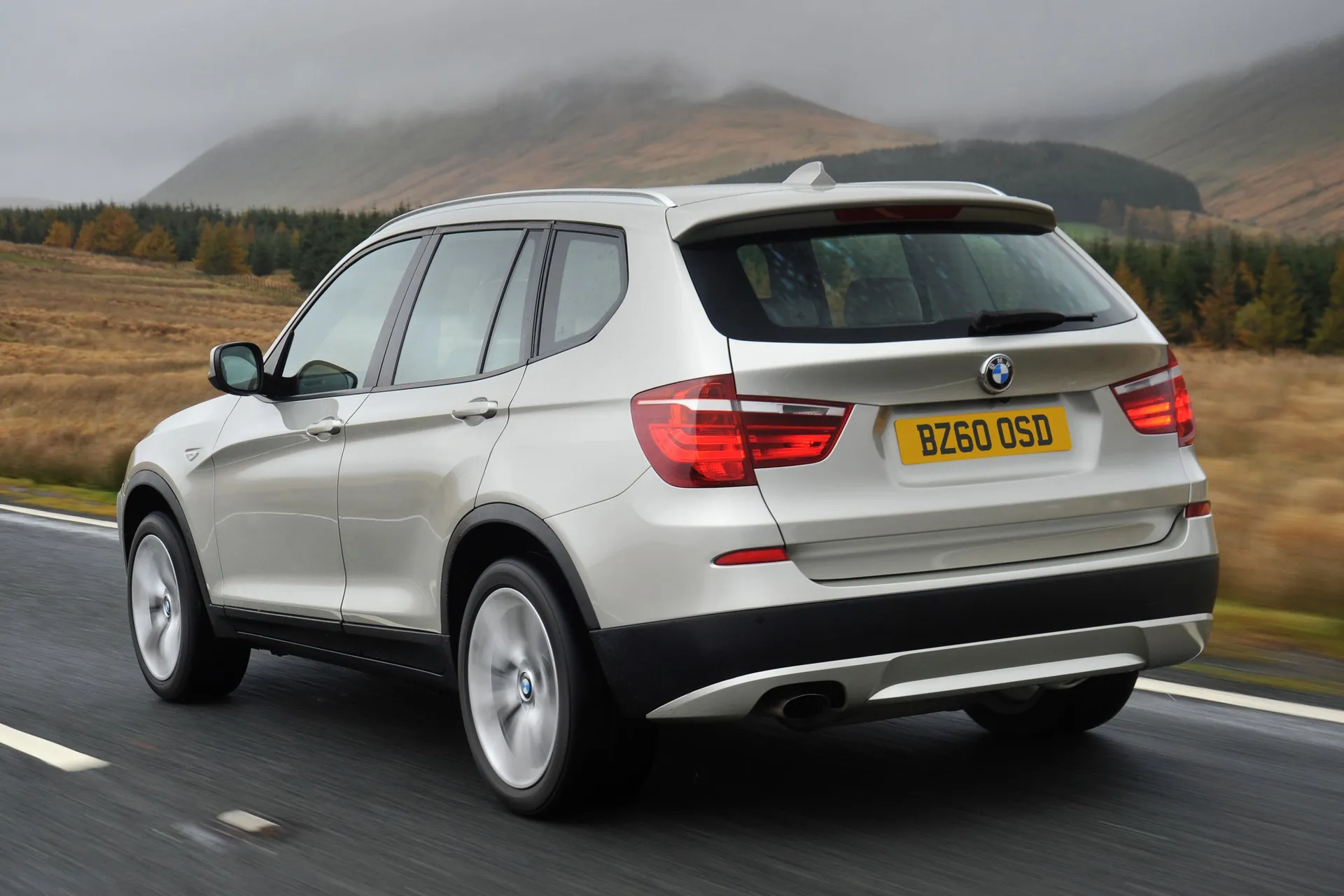
Compared to regular saloons and hatchbacks, let alone other SUVs, the X3’s handling is genuinely impressive. Standard BMW X3 SE and xLine models perform well, while top-spec M Sport versions with their stiffer suspension will truly amaze at how they handle turns.
The standard Servotronic steering offers good feedback to drivers. Optional Variable Sport Steering can be found on the BMW xDrive 30d and xDrive 35d; this varies the amount of steering effort needed, depending on your speed. It can be an acquired taste, so needs to be experienced if you are considering one of these cars.
Grip and traction off-road is considerable in the xDrive four-wheel-drive models, but don’t expect to get as far as you might in a Land Rover Discovery Sport. Still, the X3 should be capable enough for most buyers. Hill Descent Control is fitted to xDrive versions, but not to rear-wheel-drive sDrive models.
Ride quality is where the X3’s sporting intentions become slightly more problematic. SE models on 17-inch wheels will be the most comfortable. Conversely, expect an M Sport X3 with optional 20-inch wheels to have the firmest ride of all.
M Sport models also have stiffer sports suspension as standard. It never becomes completely uncomfortable, but may be a shock for those expecting a cosseting SUV experience. It is worth noting that M Sport models could be ordered with regular ‘Comfort’ suspension as a no-cost option.
One solution to this comes with Variable Damper Control. This option lets the driver alter how stiff the suspension is. Available across the range, it offers the best of both worlds, flicking between Comfort and Sport modes as you see fit.
What engines and gearboxes are available in the BMW X3?
The entire BMW X3 range consists solely of diesel engines, meaning those wanting a petrol are out of luck here. On the bottom rung is the 143PS 18d 2.0-litre turbo, offered solely in sDrive rear-wheel-drive configuration. With a 0-62mph time of 10 seconds, it lacks the performance the X3 deserves. Unless you are desperately averse to four-wheel drive, this model is best avoided.
The 2.0-litre turbo 20d was first sold with 184PS, before the 2014 update took output to 190PS. It feels far more lively, with 0-62mph taking 8.1 seconds regardless of whether the manual or automatic transmission is picked. In terms of performance and flexibility, it should be more than enough for most X3 buyers. Like all the other engines listed below, it comes with xDrive four-wheel drive.
With 258PS, the single-turbo 3.0-litre six-cylinder 30d packs a much bigger punch. It only comes with the eight-speed automatic gearbox, and can accelerate from 0-62mph in 6.2 seconds.
However, if ultimate performance is what you seek, the twin-turbocharged 3.0-litre 35d is the only way to go. Its 313PS output would shame many sports cars, with the accompanying torque making for rapid acceleration. Zero to 62mph takes 5.8 seconds, yet there is still the potential for up to 46mpg.
Like the 30d, the 35d also comes fitted as standard with the eight-speed automatic gearbox. Finding a car with it fitted is recommended more generally, as it adds to the driving experience.
Refinement and noise levels
Improving refinement was an important part of the second-generation BMW X3’s development. BMW’s efforts were mostly successful, with the interior of the X3 proving to be calm and comfortable when cruising along. Tyre noise is kept to a minimum, which is impressive given the fat rubber fitted to top-spec BMW X3 M Sport models.
Only wind noise from the wing mirrors is an issue at motorway speeds, but not enough to put anyone off considering the X3. The range of diesel engines is relatively quiet and refined. The only time you may remember your BMW X3 is powered from the black pump is on a cold morning, or when revving the engine fully, when there can be a little bit of clatter.
In general, the X3’s engines go about their business unobtrusively, delivering impressive acceleration. The BMW X3 delivers on its promise of comfort and refinement, and should leave both driver and passengers feeling relaxed during long journeys.
Safety equipment: How safe is the BMW X3?
BMW submitted the second-generation X3 to Euro NCAP for crash testing. The German company was understandably pleased with the result, with the X3 scoring the maximum possible five stars.
This is credited to a wealth of standard safety equipment, including front, side and curtain airbags on all models. Traction control and stability control are fitted across the board, while xDrive four-wheel drive versions benefit from the ability to send torque to the wheel with the most grip.
As ever, the options list contains numerous ways to add more to the X3. A rear-view camera, or even a 360-degree surround-view camera, can supplement the standard front and rear parking sensors. Post-facelift cars can have the Driving Assistance Package fitted, which adds features like Lane-Keeping Assist, City Collision Mitigation and Forward Collision Warning.
The X3 only comes with regular halogen headlights as standard. Xenon lights can be fitted to pre-facelift models as an option. Post-2014 facelift versions had the option of xenon units or even fancier adaptive LED headlights.
BMW does not fit spare wheels as standard, preferring to rely on puncture repair kits or run-flat tyres. This helps reduce weight and improve fuel economy, but is something worth remembering should you make numerous motorway journeys.
ISOFIX attachment points for child seats are fitted as standard to the back seats, meaning there should be no problems installing them safely.
MPG and fuel costs: What does a BMW X3 cost to run?
"Being offered solely with diesel engines means the entire X3 range performs well in terms of fuel consumption."
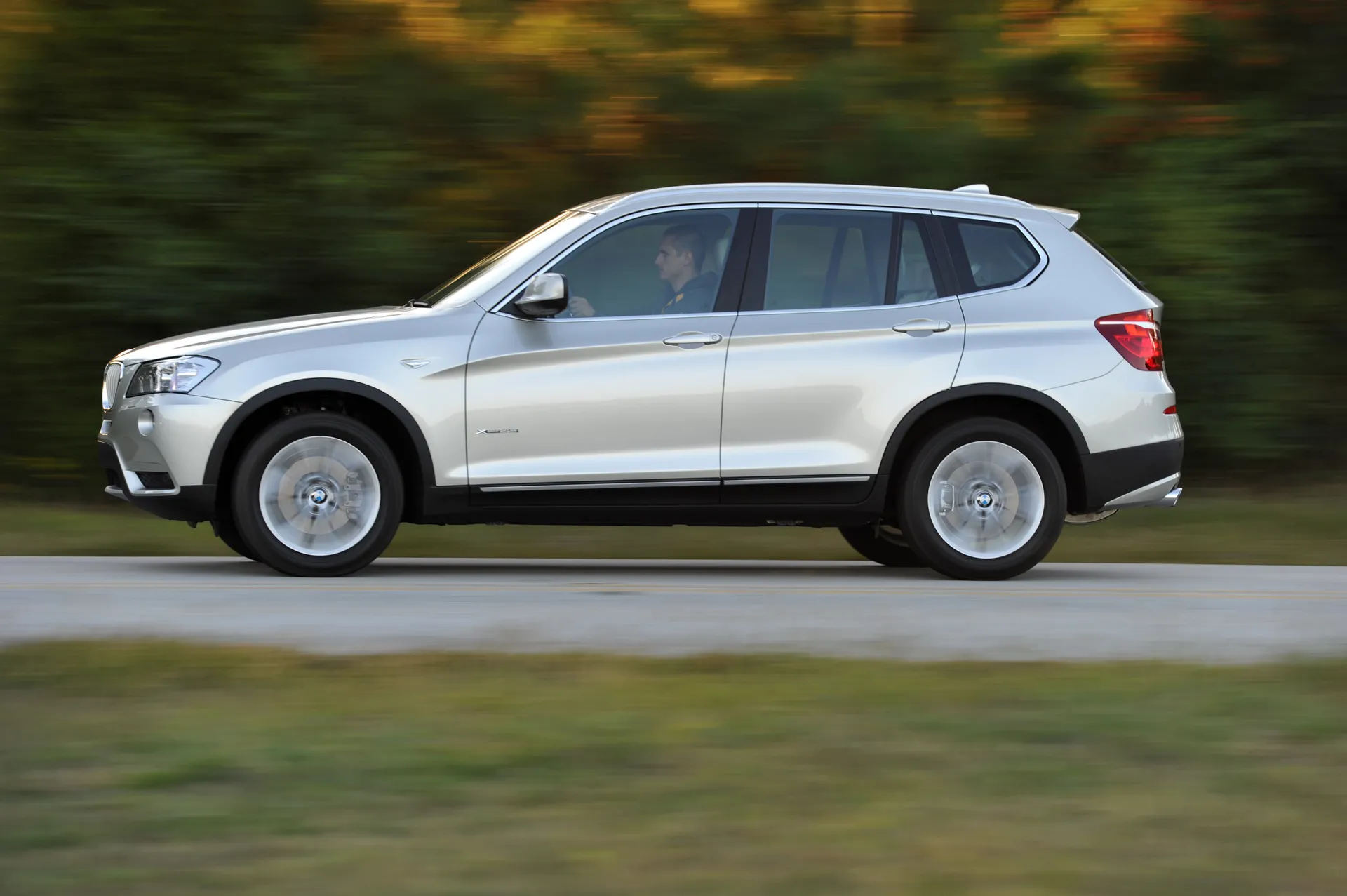
For those wanting maximum efficiency, post-2014 models fitted with the 20d 2.0-litre diesel use the least amount of fuel. Fitted with the smallest 17-inch alloy wheels and an automatic gearbox, the BMW X3 achieves an official figure of 57.6mpg.
Even the twin-turbocharged 35d version retains respectable economy. In BMW X3 M Sport trim, rolling on the largest 20-inch wheels, this 313PS model still manages an official 47.1mpg.
How reliable is the BMW X3?
The BMW X3 scored a very respectable 9.48 out of 10 for reliability in the HonestJohn.co.uk Satisfaction Survey, which makes it one of the better-performing BMWs and suggests existing owners are happy with reliability.
As a brand BMW came only 20th out of 30 manufacturers overall which is less impressive, but the X3 appears to be one of its more reliable offerings.
Insurance groups and costs
A premium SUV means insurance costs are likely to be higher than cheaper alternatives, especially given the level of performance offered by the BMW X3.
Models powered the 2.0-litre 18d engine will be the least costly, rated in insurance group 23 (out of 50). The popular 20d model saw early versions in group 28, increasing to 30 on models made after the 2014 facelift. At the top of the scale is the range-topping 35d. Pre-2014 models are in group 40, with those after the facelift in group 43.
VED car tax: What is the annual road tax on a BMW X3?
Spanning two VED (road tax) regimes, the same version of the BMW X3 can incur different costs depending on when it was first registered. Most versions of the 18d and 20d fall into VED bands E and F, with cars fitted with the automatic gearbox producing lower CO2 emissions. Expect to pay between £160 and £185 per year to tax these models depending on the specification.
Some cars sold in 2017 fall into the later VED scheme, which adds extra costs for cars valued at more than £40,000. A 30d or 35d sold from April 2017 onwards, for example, will incur a charge of £520 a year for five years after the initial payment.
How much should you be paying for a used BMW X3?
"Having proved popular with buyers, there is a plentiful supply of BMW X3s available on the used market. There is also a broad range in price, meaning you should be able to find one to fit your budget."
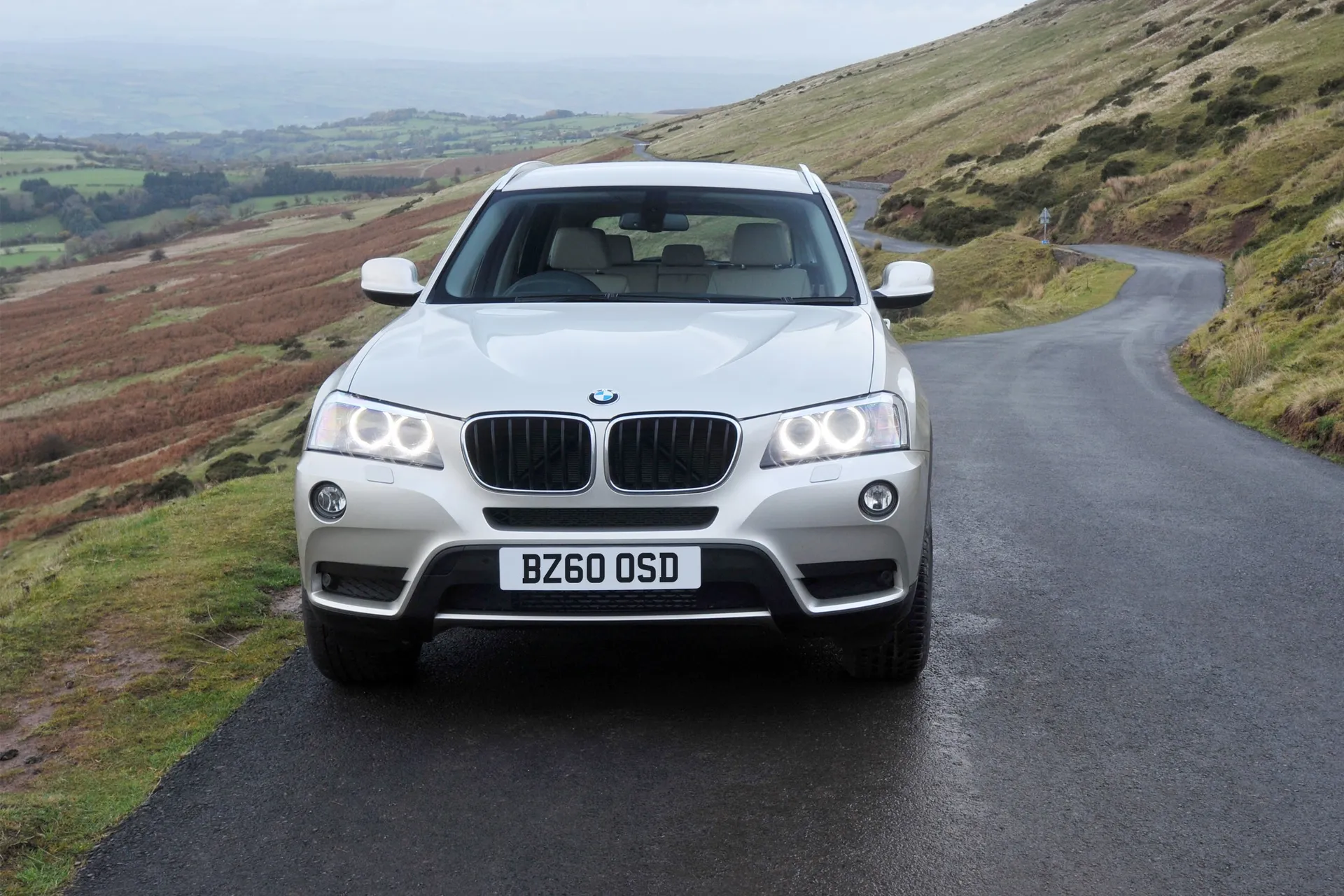
Cars in M Sport trim make up the bulk of used stock for sale, with xLine and SE versions much harder to find. This adds further weight to choosing an M Sport model. X3s with the 20d engine are also plentiful, so do shop around to find the car that suits your needs best.
Post-facelift models are the best buys, with prices starting from around £16,000 for an xDrive 20d in M Sport trim. The very latest cars still command high prices, with a 2017 xDrive 35d M Sport requiring £27,000 for a low-mileage example.
Trim levels and standard equipment
BMW kept the trim levels relatively simple for the X3, with all featuring generous levels of standard equipment. All BMW X3 SE cars have at least 17-inch alloy wheels, leather upholstery, dual-zone climate control, front and rear parking sensors, and iDrive with a 6.5-inch screen. Later updates would see DAB radio, Bluetooth phone connectivity and heated seats made standard.
Introduced in June 2014, the BMW X3 xLine adds a host of shiny aluminium trim to the outside of the X3. This includes the front grille, front and rear bumpers, and side sills. A set of 18-inch alloy wheels are fitted, plus a leather-wrapped sports steering wheel.
BMW X3 M Sport versions are top of the range and are fitted with 18-inch wheels (later upgraded to 19 inches), special M Sport styling, sport seats, run-flat tyres, M Sport suspension and aluminium interior trim.
Compared with the initial outlay, upgrading to M Sport trim on a used X3 represents good value. The sporty enhancements suit the nature of the car, and it is a popular spec with BMW fans.
Ask the heycar experts: common questions
Which is better, the BMW X3 or X5?
Is the BMW X3 a luxury car?
Is BMW discontinuing the X3?
Get our latest advice, news and offers
Keep me updated by email with the latest advice, news and offers from heycar.
By submitting you agree to our privacy policy
